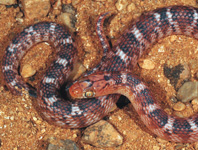Abstract
Hesperentomon bolense sp. n., described from Northwest China, is distinguished from other Hesperentomon spp. by having foretarsal sensillum b clearly shorter than c, a robust sensillum c broader than the other foretarsal sensilla, 18 posterior setae on the mesonotum and 16 posterior setae on the metanotum, 12 posterior setae on urotergites II–VI (P1a and P2a absent), 8 posterior setae on urosternites IV–VI (Pc absent), and absence of seta P2a on urotergite VII. The morphological characters of all described species of Hesperentomon are compared, and an updated identification key to species is given. The DNA barcodes of H. bolense sp. n. were compared to similar species of the genus; the K2P genetic divergences were 0–5.1% between individuals of H. bolense sp. n., but 21.4%–27.3% between H. bolense sp. n. and other congeneric species. The molecular data further confirmed H. bolense as a distinct species.
References
Bai, Y. & Bu, Y. (2013) Hesperentomon yangi sp. n. from Jiangsu Province, Eastern China, with analyses of DNA barcodes (Protura, Acerentomata, Hesperentomidae). ZooKeys, 338, 29–37.
https://doi.org/10.3897/zookeys.338.6099Bu, Y., Ma, Y., Luan, Y.X. (2016) Paracerella Imadate in China: the description of a new species and the analysis of genetic differences between populations (Protura, Acerentomata, Nipponentomidae). ZooKeys, 604, 1–11.
https://doi.org/ 10.3897/zookeys.604.8737Bu, Y., Shrubovych, J. & Yin, W.Y. (2011) Two new species of genus Hesperentomon Price, 1960 (Protura, Hesperentomidae) from Northern China. Zootaxa, 2885, 55–64.
Bu, Y. & Yin, W.Y. (2007a) The Protura from Xinjiang, Northwestern China. Zootaxa, 1437 (1), 29–46.
https://doi.org/10.11646/zootaxa.1437.1.2Bu, Y. & Yin, W.Y. (2007b) Two new species of Hesperentomon Price, 1960 from Qinghai Province, Northwestern China (Protura: Hesperentomidae). Acta Zootaxonomica Sinica, 32 (3), 508–514.
https://doi.org/10.3969/j.issn.1000-0739.2007.03.004Folmer, O., Black, M., Hoeh, W., Lutz, R. & Vrijenhoek, R. (1994). DNA primers for amplification of mitochondrial cytochrome c oxidase subunit I from diverse metazoan invertebrates. Molecular Marine Biology and Biotechnology, 3 (5), 294–299.
Gao, Y. & Bu, Y. (2014) A modified non-destructive DNA extraction method for microarthropods. Sichuan Journal of Zoology, 33 (2), 216–220. [in Chinese with English summary]
https://doi.org/10.3969/j.issn.1000-7083.2014.02.011Imadaté, G. (1974) Protura (Insecta) Fauna Japonica. Keigaku Publishing, Tokyo, 351 pp.
Imadaté, G. (1989) Occurrence of Huhentomon and Hesperentomon (Protura) in Japan. Bulletin of the Biogeographical Society of Japan, 44, 157–164.
Kumar, S., Stecher, G. & Tamura, K. (2016) MEGA7: Molecular evolutionary genetics analysis version 7.0 for bigger datasets. Molecular Biology and Evolution, 33 (7), 1870–1874.
https://doi.org/10.1093/molbev/msw054Martynova, E.F. (1970) New species of Protura from the High Mountain Region of Tian Shan. Zoologicheskii Zhurnal, 49, 236–240. [in Russian with English summary]
Price, D.W. (1960) A new family of Protura from California. Annals of the Entomological Society of America, 53, 675–678.
https://doi.org/10.1093/aesa/53.5.675Rusek, J., Shrubovych, J. & Szeptycki A. (2012) Head porotaxy and chaetotaxy of order Acerentomata (Protura). Zootaxa, 3262, 54–61.
Shrubovych, J. (2010) Redescription of Hesperentomon tianshanicum Martynova, 1970 (Protura: Acerentomata, Hesperentomidae) and key to Hesperentomon species. Zootaxa, 2720, 28–34.
Shrubovych, J. (2014) Identification and character analysis of the Acerentomidae (Protura) of the northeastern Palearctic (Protura: Acerentomidae). Zootaxa, 3755 (2), 136–164.
https://doi.org/10.11646/zootaxa.3755.2.2Szeptycki, A. (1988) New genera and species of Protura from the Altai Mts. Acta Zoologica Cracoviensia, 31 (7), 297–362.
Tang, B.W. & Yin, W.Y. (1988) Three new species of Protura from Sichuan Province. Zoologica Research, 9 (3), 309–315. [in Chinese with English summary]
Tang, B.W. & Yin, W.Y. (1991) A new species of Protura from Guizhou Province with description of larval stages. Acta Entomologica Sinica, 34 (3), 326–330. [in Chinese with English summary]
Wu, D.H. & Yin, W.Y. (2008) Two new species of Protura (Protentomidae and Hesperentomidae) from Northeastern China. Oriental Insects, 42, 237–246.
https://doi.org/10.1080/00305316.2008.10417548Yin, W.Y. (1982) Studies on Chinese Protura: description of two new species of Hesperentomon and their larval stages. Acta Entomologica Sinica, 25 (1), 89–95. [in Chinese with English summary]
Yin, W.Y. (1984) The discovery of Proturentomon and description of two new species Hesperentomon in China (Protura: Protentomidae, Hesperentomidae). Acta Entomologica Sinica, 27 (4), 418–425. [in Chinese with English summary]
Yin, W.Y. (1999) Fauna Sinica Arthropoda Protura. Science Press, Beijing, 510 pp. [in Chinese]
Yin, W.Y. & Xie, R.D. (1993) A new genus, two new species, and two new records of Protura from the Northeast China. Contributions from Shanghai Institute of Entomology, 11, 63–71.
Yin, W.Y., Xie, R.D. & Imadaté, G. (1994) A new Hesperentomon (Protura) from Yunnan, Southwest China. Japanese Journal of Entomology, 62 (3), 591–595.

